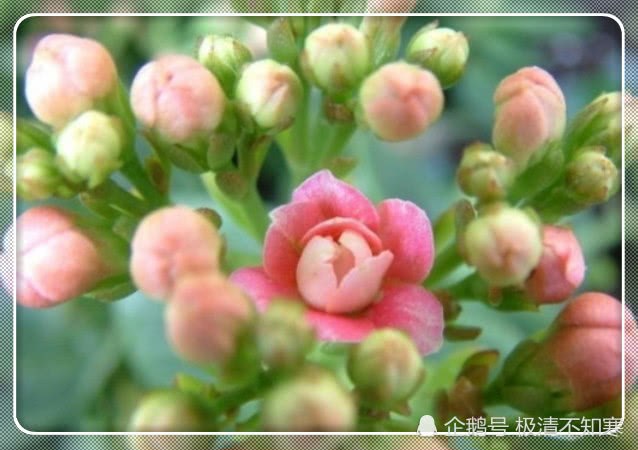Longevity flowers, begonias, Yushu. You can grow a pot without paying for a leaf.

1. Paulownia
Paulownia is a kind of plant which is difficult to raise and blossom. Maintenance needs a warm and moist environment, scattered light can be maintained, and thin fertilizer is needed during the growing period. However, paulownia is a plant that is easy to propagate successfully by leaf insertion.
The picture above is a large paulownia leaf cut into many pieces, and the upper part of the red circle is the vein and petiole, all of which can grow roots. As long as the big paulownia grows roots, it can grow young plants, and leaf insertion propagation is so simple and successful.
Of course, you can also use the whole leaf to insert and propagate directly, and the leaf can be inserted obliquely into the soil to maintain a slightly moist environment, keep shade and ventilation, keep the temperature above 18 degrees, and maintain a certain degree of humidity, which will soon take root.
The growth of young plants to keep the soil moist, to avoid soil stagnant water, young plants can see a little light, no light can increase the time of light exposure.
Second, take root on the ground
Above this kind of ground to take root is the broad-leaved undead bird, is a kind of particularly tolerant plant.
The method of rooting and leaf insertion and propagation is very simple. The leaves are cut off together with the petiole and laid directly on the soil surface. The soil does not even need to be watered. The leaves can grow and take root by themselves, avoiding exposure to the sun and freezing.
3. Begonia
Begonia is a kind of fresh and beautiful plant with green leaves and small white villi on the leaf surface, which needs a warm and scattered light environment.
The leaf cutting and propagation of begonia is also relatively simple, the leaves are cut off together with the petiole, the petiole is generally cut off, put shade to dry for a few minutes, and then directly cut in the slightly moist sandy soil, which can be cut directly with perlite or peat soil to maintain temperature and humidity during cultivation. The soil is slightly moist.
The leaves of begonia can also be propagated by hydroponics, and the leaves will take root faster, but the petiole can touch clean water. After taking root, the leaves should be transplanted to the soil, and then keep warm and moist.
After taking root and sprouting, you can slowly see the light, keep the environment warm and humid, avoid the strong light will be frozen, and maintain the maintenance temperature above 15 degrees.
Fourth, longevity flowers
These thick leaves can be cut off, cut off and propagated, cut off together with the petiole, put in a cool place to dry the wound, and then cut into the soil. The soil uses loose and breathable sandy soil, which can take root and sprout in a few weeks without watering.
After the young plants of longevity flowers grow out, the mother leaves will slowly wither, and then they will slowly see the light, and gradually reduce watering, so that they will soon grow into adults.
5. Yushu
Yushu is the best potted succulent plant I have ever raised. Just keep it warm and slightly dry. More light can make Yushu grow vigorously.
Directly pick thick leaves, also put in a cool place to dry the wound, but pay attention to the wound do not touch water.
Prepare loose, breathable and drained sandy soil, the leaves can be laid directly on the soil surface, flat or oblique insert, and then avoid watering, put in a shaded and ventilated place, the temperature is kept above 15 degrees.
After the young plants grow out, they can be moistened with a little water on the edge of the basin soil, and the mother leaves begin to see light slowly after withering. At the same time, when the basin soil is dry and thoroughly poured, the young plants of Yushu can maintain good growth.
The copyright belongs to the original author. If you infringe the copyright, please contact and delete it.
- Prev

Don't be angry, don't worry about it, don't think about it.
Players must have a good mentality to live in this world. In this world, people should be open-minded, far-sighted, light-minded, open-minded, magnanimous, broad-minded, sunrise and sunset, life is like a play cloud.
- Next

Feed some soup to the longevity flower after autumn. The bud burst into the pot and envied others.
Changchun studio perennial succulent herbs, because the beautiful meaning is many flower-growing friends like indoor potted plants, so want to longevity flowers, wish beautiful flowers pruning and drilling is essential, 6 to 4 stay 2, is pruning.
Related
- Wuhan Hospital Iron Tree Blooming Result Was Instantly Frightened by the Gardener Master
- Which variety of camellia is the most fragrant and best? Which one do you like best?
- What is the small blue coat, the breeding methods and matters needing attention of the succulent plant
- Dormancy time and maintenance management of succulent plants during dormancy
- Minas succulent how to raise, Minas succulent plant pictures
- What are the varieties of winter succulent plants
- How to raise succulent plants in twelve rolls? let's take a look at some experience of breeding twelve rolls.
- Attention should be paid to water control for succulent plants during dormant period (winter and summer)
- Watering experience of twelve rolls of succulent plants
- Techniques for fertilizing succulent plants. An article will let you know how to fertilize succulent plants.

